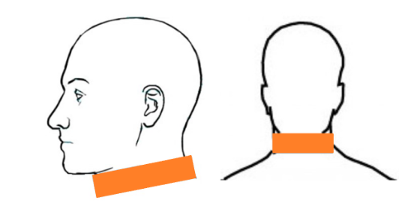Fencing Draft:Protective Equipment
Jump to navigation
Jump to search
This section describes the protective clothing and other equipment that you must wear for combat.
General requirements
- Your armour is to be designed and worn so that no gaps form over vital body areas when you assumes any reasonable position, and no more than incidental gaps on other areas.
- If there is a small gap in coverage for areas required to be covered by abrasion-resistant material, such as a loose seam on a glove, then the item is still considered safe and legal.
- A "Hold!" should not be called for incidental gapping in abrasion resistant armour, such as a gap between glove and sleeve, or a sock slipping down during a lunge.
- These are the minimum standards for fencing clothing and equipment. You can wear additional equipment, including appropriate period clothing like hoop skirts, or additional protective equipment such as a chest protector for comfort, but you need to make sure that you are still able to feel and call "good" blows.
- During sword or dagger drills with an opponent, you must wear eye protection, such as spectacles, sunglasses, safety glasses or a fencing mask or helm.
- You must wear full face protection for weapons drills against an opponent using a spear.
- There are four types of protective material:
- rigid material
- penetration-resistant material
- abrasion-resistant material
- resilient padding.
- The requirements for protective material are defined in section 5.1.
Head
- The front and top of your head must be covered by rigid material to below the jawline and behind the ears. Standard 12kg fencing masks comply with this requirement. You can also wear a fencing helm.
- Your mask or helm must have resilient padding or be suspended to prevent it hitting your head if it is struck:
- Modern fencing masks meet this requirement, but you might need additional padding if the mask's padding degrades as it gets older.
- If you wear a helm, you might need extra padding if the suspension is not enough to stop the helm hitting your head.
- When you put your mask or helm on, it should fit snugly and not move much during combat. It should not have any parts that press into your head.
- Your mask or helm must be secured so that it cannot be easily removed or dislodged during combat. Masks require an additional fastening method besides the tongue spring and back strap to secure them.
- If you wear a mask, the rest of your head must be covered by at least penetration-resistant material. This can be worn inside or over the mask:
- For combat involving rubber band guns, we recommend you use resilient padding or rigid material to protect the back of your head.
- You must wear rigid material to protect the back your head in Cut and Thrust fencing.
Neck
- You must wear a gorget (collar) made from rigid material to protect your entire neck and throat. This should be backed by resilient padding or penetration-resistant material. Figure 2 shows the area which must be protected.
- Neck protection with a gap of less than 9mm (for example, where the ends of two plates meet) meets this standard, so long as the gap is not within the front or rear 90 degree arc.
Torso
- You must wear penetration-resistant material to protect your torso, including your chest, back and abdomen, and your upper arm extending at least 10cm from the armpit.
- Breast protection, such as a plastron or extra padding, is strongly recommended.
- External reproductive organs must be covered by rigid material.
Legs, feet and arms
- You must wear abrasion-resistant material on your legs, feet and arms.
- You must also wear resilient padding to protect your elbows and knees in Cut and Thrust fencing.
Hands
- You must wear gloves made of at least abrasion-resistant material to cover your hands and fingers.
- There are extra requirements for Cut and Thrust fencing:
- You must wear gloves with at least resilient padding that protect the back of your hands and fingers, and your arm to 2.5 cm above the bend of your wrist.
- If at least one combatant is using a two-handed sword, you need to wear gloves with rigid material that protect the back of your hands and fingers, and your arm to 2.5 cm above the bend of your wrist.
- The coverage for a) and b) can include a combination of gauntlets, the guard of your sword, or a shield or buckler, as long as these prevent a reasonable percussive blow from contacting the bones of the hand and wrist.
- A shield alone is not sufficient in Lochac, since it covers only the back of the hand, but not the wrist, fingers or thumb.
Medical protection
- If a part of your body is at risk of serious injury or severe bleeding, such as hemangioma, you must protect that body part with rigid material.
- If you wear medical equipment, you must cover it with protective material to help protect you from a blow or fall that could damage the equipment.
- You take responsibility for your own safety on the field, based on any advice from your doctor or health professional. You can ask a marshal for advice, but you will be the best expert for determining your safety.
